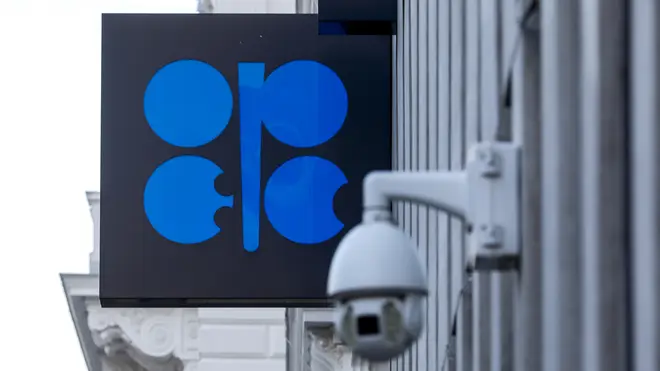
James O'Brien 10am - 1pm
30 November 2023, 19:14

Opec+ members are working to bring oil prices back up amid market oversupply.
The Opec oil cartel led by Saudi Arabia and allied producers including Russia have made another bid to prop up lagging crude prices, expanding some output cuts into next year and bringing up-and-coming oil supplier Brazil into the fold.
Lower oil prices have been a good thing for US drivers, who have been able to fill their tanks for less money in recent months.
But it is bad news for Opec+ countries whose oil income bolsters their economies and who have faced setbacks in pushing prices higher despite initial fears that the Israel-Hamas war could affect oil flows.
The Opec+ oil ministers came out of an online meeting with more than two million barrels per day in voluntary cuts through the first three months of next year, and declared that Brazil will join the bloc in January, bringing one of the world’s fastest-growing oil producers into an alliance that is trying to rein in global supply.
However, sweeping cutbacks that have been imposed by Opec+ and individual member countries since October 2022 have not made lasting changes to oil prices because of concerns about too much crude circulating in a weakening global economy, which could weigh on the thirst for oil for travel and industry.
The market even shrugged off the new move, though it amounts to roughly 2% of global supply.
Saudi Arabia led the deepening voluntary cuts Thursday, extending its reduction of one million barrels per day through March.
It was followed by Russia, which said it is cutting 500,000 barrels per day, and then Iraq, the United Arab Emirates, Kuwait, Kazakhstan, Algeria and Oman with smaller amounts.
Russia wants higher oil prices to boost the main way it fills its war chest against Ukraine, while the Saudis have to earn nearly 86 dollars per barrel to meet their planned spending goals, according to the latest estimate from the International Monetary Fund (IMF).
Saudi Arabia is trying to fund an ambitious overhaul of the kingdom’s economy, reduce its dependence on oil and create jobs for a young population.
But the international benchmark Brent crude has stayed in the low- to mid-80 dollar range in recent weeks and fell more than 2% to 80.91 dollars a barrel following the Opec+ meeting.
US crude also dropped 2.5% to 75.90 dollars a barrel in electronic trading on the New York Mercantile Exchange.
US oil production has hit records as Opec+ has cut back, with producers outside the group expected to keep leading global growth in oil supply next year, the International Energy Agency (IEA) said in its November oil report.
For instance, daily production in the US averaged 13 million barrels a day in August, an increase of more than one million barrels from a year ago, according to the latest monthly figures from the US Energy Information Administration.
Now, the risk is growing production cuts could reduce the influence of Opec+ over oil supplies as other countries boost their output.
“The kingdom is balancing the desire to keep prices high by limiting supply with the knowledge that doing so will lead to a further drop in overall market share,” said Jorge Leon, senior vice president of oil market research for Rystad Energy.
Bringing in Brazil, which the IEA also said has been producing record amounts of oil this year, would give Opec+ a leg up.
Jose Chrispiniano, press secretary for President Luiz Inacio Lula da Silva, said the invitation was under analysis.
Meanwhile, fears the conflict between Israel and Hamas might spread throughout the region, creating a shock to the oil market, have not materialised, with the IEA noting that “there has been no material impact on oil supply flows from the war”.